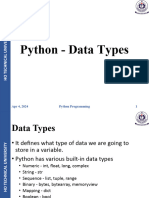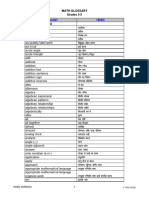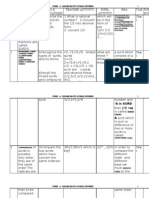0% found this document useful (0 votes)
21 views15 pagesExpressions in Python 240812 220052
The document outlines various types of expressions in Python, including constant, arithmetic, relational, logical, and bitwise expressions, along with their respective operators and precedence. It also describes Python's built-in data types, such as numeric, sequence, boolean, set, and dictionary, detailing their characteristics and usage. The document emphasizes the importance of operator precedence in evaluating expressions and the classification of data types in Python programming.
Uploaded by
vigneshbala302Copyright
© © All Rights Reserved
We take content rights seriously. If you suspect this is your content, claim it here.
Available Formats
Download as PDF, TXT or read online on Scribd
0% found this document useful (0 votes)
21 views15 pagesExpressions in Python 240812 220052
The document outlines various types of expressions in Python, including constant, arithmetic, relational, logical, and bitwise expressions, along with their respective operators and precedence. It also describes Python's built-in data types, such as numeric, sequence, boolean, set, and dictionary, detailing their characteristics and usage. The document emphasizes the importance of operator precedence in evaluating expressions and the classification of data types in Python programming.
Uploaded by
vigneshbala302Copyright
© © All Rights Reserved
We take content rights seriously. If you suspect this is your content, claim it here.
Available Formats
Download as PDF, TXT or read online on Scribd
/ 15





















































































